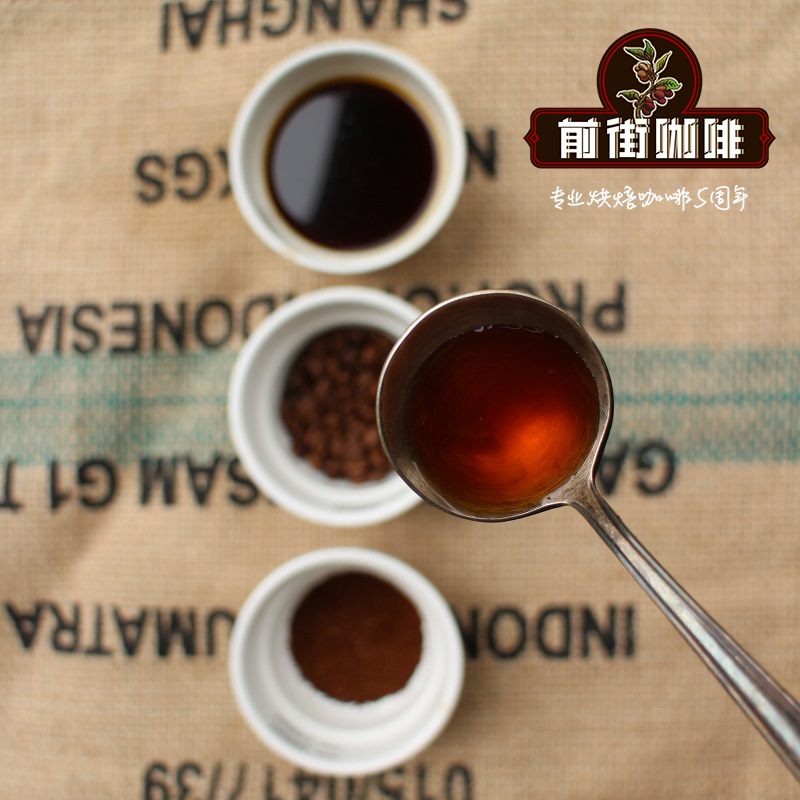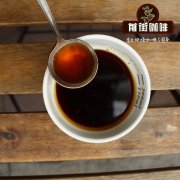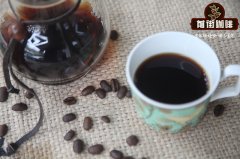What is the description of coffee flavor? How do you explain the flavor of coffee? A description of the taste of coffee

Professional coffee knowledge exchange more coffee bean information please follow the coffee workshop (Wechat official account cafe_style)
If you like coffee and are interested in coffee, Qianjie Coffee is very recommended that you take part in a cup test to explore how the environment of the place of origin and the treatment of raw beans can affect the flavor of coffee.
The coffee cup test originated from the coffee trade in the late 19th century. Since coffee traders need to evaluate the quality of a large amount of coffee, they use the cup test as a quick method. Of course, the original cup test mode was very simple. Hundreds of coffees are juxtaposed on the table, and traders quickly sip each cup and then thumb up or down to pass or fail, that's all, without grading the coffee's complex aroma, taste, and so on.
With the development of the 20th century, people are more and more interested in the subtle and delicate flavor of coffee. In 1932, Ukers's work All About Coffee was the first book to delve deeply into the concept of coffee cup testing. In those days, the coffee industry had a very crude description of coffee, with only 17 words for flavor, including smooth, mellow, acidic, soft, Rio, moldy, grass, leather, and my "favorite"-fishy smell. In 1970, when boutique coffee was about to start, coffee cup testers took inspiration from the wine tasting world and began to develop a set of words for coffee, and the language of coffee was gradually established. During the cup test, people will begin to carefully record the whole complex and delicate sensory experience.
Raw coffee beans are naturally characterized by volatile aromatic oils locked in the cellular structure. The unique flavor and personality of each high-quality coffee comes from these aromatic oils. Generally speaking, taste, taste, and acidity combine to form the unique coffee flavor of each batch of coffee beans, and roasting can give full play to the potential aroma in the flavor.
When describing coffee, we will mainly describe it from five aspects, namely: taste, taste, aroma, flavor, cleanliness. So which adjectives are contained in these five aspects?
Taste-the mouth and tongue feel the weight and touch of coffee
Body size: frivolous? Mellow?
Also known as Body, refers to the thickness and weight that coffee feels on its tongue. When coffee stays on your tongue, do you feel that its weight and thickness are light or mellow?
Touch: smooth? Astringent?
The touch and touch of coffee on your tongue and mouth
Smooth: feel the weight of coffee slipping down your throat like silk from your tongue. Imagine you are drinking a cup of hot chocolate. It usually tastes very smooth. Smoothness is usually synonymous with mellow, which is often felt in greasy coffee.
Astringent feeling: the mouth feels dry and the oral mucosa is wrinkled. Lose the lubrication effect of saliva, resulting in a sense of convergence. In the world of wine, astringency is not necessarily bad. A good sense of astringency can set off the three-dimensional feeling of wine, but in the world of coffee, it is a bad taste that should be avoided as far as possible.
Taste-the bitterness of the taste buds on the tongue
Acid: fragrant acid? Dead acid?
Is it sour, sour and sweet with fruity aroma or no aroma at all? it's just a kind of dead acid that makes people's faces suck.
Sweet
Bitter
Words that further modify the taste:
Round: the overall taste is balanced, smooth and does not make people feel that the acidity is irritating and unpleasant.
Sharp: usually refers to the acidity is very obvious, irritating, cross-Zhang a little bit to describe is the kind of feeling that makes people's facial nerve maladjusted.
Bright: usually set off by acidity, making a flavor of coffee particularly fresh and clear in the mouth.
Aroma-the volatile smell you smell before drinking
Often heard descriptions like fruity, cream, flower fragrance. And so on, and then divided into:
Dry aroma: the seductive aroma of coffee beans that are ground and dispersed into the air
Damp incense: the aroma smelled after brewing and before drinking.
Flavor-the fascinating aroma of the coffee after the entrance
The difference between flavor and aroma is that flavor refers to the aroma that enters the nasal cavity by catalysing the aroma stored in the coffee oil after the entrance, which is also the most attractive part of the coffee. Commonly heard aromas of flowers, oranges, berries, nuts, caramel, chocolate. And so on, for the sake of memory and communication, people try to use these smells that people will have an impression to make a connection.
Cleanliness-
To put it simply, there is no smell, miscellaneous smell, does not belong to the taste of coffee.
Other-
Emptiness: empty, there is no content, drink to the middle will have no taste
Balance: this talks about the overall feeling, taste, taste, aroma, flavor, whether it is balanced, whether one of the feelings is particularly strong.
Coffee is God's treasure house of fragrance in the world. Qianjie coffee uses scent bottles to train its sense of smell, and cup tests correspond to similar scent bottles to train to remember the flavor of coffee.
Important Notice :
前街咖啡 FrontStreet Coffee has moved to new addredd:
FrontStreet Coffee Address: 315,Donghua East Road,GuangZhou
Tel:020 38364473
- Prev

How do you explain the flavor of coffee? Coffee flavor description what is the flavor of coffee beans?
Professional coffee knowledge exchange more coffee bean information please pay attention to the coffee workshop (Wechat official account cafe_style) do not remember, every time you go to the coffee shop, when you order a cup of coffee, or choose a bag of boutique coffee beans, the boss will be beaming, dancing said a lot of technical terms to describe the coffee flavor, taste, often sounds beautiful and dreamy, but
- Next

Arabica family-which belong to Arabica coffee beans _ what coffee beans does Arabica have
Professional coffee knowledge exchange more coffee bean information please follow the coffee workshop (Wechat official account cafe_style) what kind of seeds did I buy? I believe that many friends, and even peers have no lack of these experiences, when buying coffee raw beans / cooked beans, they will see information about the tree species of this coffee. The editor also had doubts when he saw a coffee bean from Kenya, SL28,SL3.
Related
- Beginners will see the "Coffee pull flower" guide!
- What is the difference between ice blog purified milk and ordinary milk coffee?
- Why is the Philippines the largest producer of crops in Liberia?
- For coffee extraction, should the fine powder be retained?
- How does extracted espresso fill pressed powder? How much strength does it take to press the powder?
- How to make jasmine cold extract coffee? Is the jasmine + latte good?
- Will this little toy really make the coffee taste better? How does Lily Drip affect coffee extraction?
- Will the action of slapping the filter cup also affect coffee extraction?
- What's the difference between powder-to-water ratio and powder-to-liquid ratio?
- What is the Ethiopian local species? What does it have to do with Heirloom native species?

